
Find Help
More Items From Ergsy search
-

Is a womb lining test painful?
Relevance: 100%
-

Is the womb lining test painful?
Relevance: 98%
-

What is the Womb Lining test?
Relevance: 85%
-

What is the womb lining test?
Relevance: 84%
-

Is the womb lining test covered by the NHS?
Relevance: 82%
-

How is a womb lining test conducted?
Relevance: 82%
-

Is the womb lining test covered by the NHS?
Relevance: 81%
-

Why is a womb lining test performed?
Relevance: 80%
-

Are there risks associated with a womb lining test?
Relevance: 80%
-

Can a womb lining test detect cancer?
Relevance: 80%
-

How is the womb lining test performed?
Relevance: 79%
-

Are there any risks associated with the womb lining test?
Relevance: 78%
-

Can a womb lining test detect cancer?
Relevance: 77%
-

Can I drive after the womb lining test?
Relevance: 76%
-

What happens after a womb lining test?
Relevance: 76%
-

Why might someone need a womb lining test?
Relevance: 76%
-

How should I prepare for a womb lining test?
Relevance: 74%
-
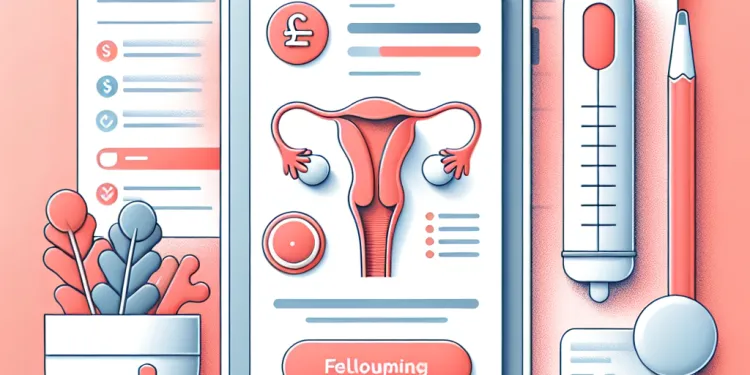
Is there any follow-up required after a womb lining test?
Relevance: 73%
-
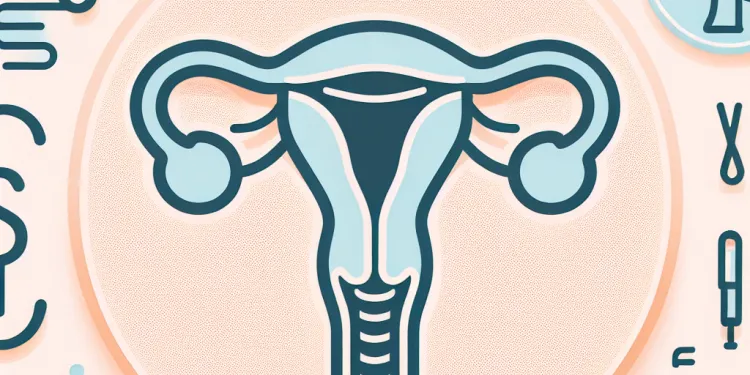
Does the womb lining test require any special preparation?
Relevance: 71%
-

How long does it take to get results from a womb lining test?
Relevance: 66%
-

How long does it take to get results from a womb lining test?
Relevance: 66%
-

What does an evaporation line mean on a pregnancy test?
Relevance: 42%
-

What should I do if I experience severe pain or bleeding after the test?
Relevance: 31%
-

How to deal with period pain | NHS
Relevance: 31%
-

What is a lot line adjustment?
Relevance: 28%
-

Are digital pregnancy tests more accurate than non-digital tests?
Relevance: 28%
-

How does a pregnancy test work?
Relevance: 27%
-

What is a pregnancy test?
Relevance: 26%
-

Period pain (dysmenorrhoea) - BSL
Relevance: 26%
-

What should I do if I get unclear results on a pregnancy test?
Relevance: 25%
-

How do NSAIDs work to reduce pain?
Relevance: 24%
-

How to deal with period pain | NHS
Relevance: 24%
-

When should I take a pregnancy test?
Relevance: 24%
-
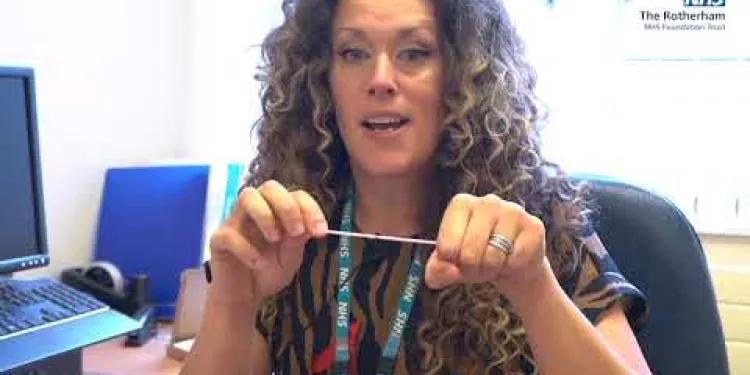
Rectal swab test for Gonorrhoea and Chlamydia
Relevance: 24%
-
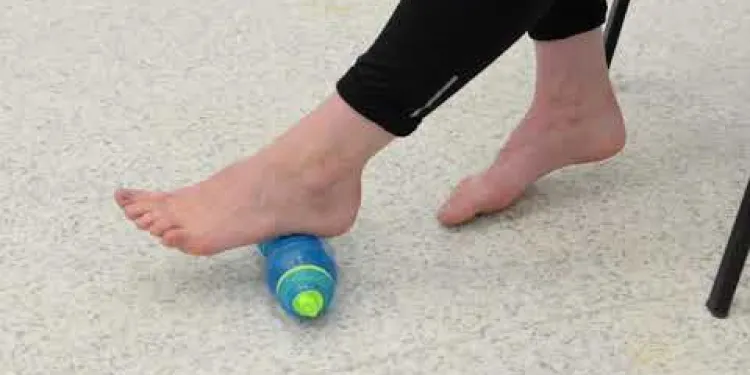
Foot Pain
Relevance: 23%
-

Is impetigo painful?
Relevance: 23%
-

How to deal with period pain | NHS
Relevance: 23%
-
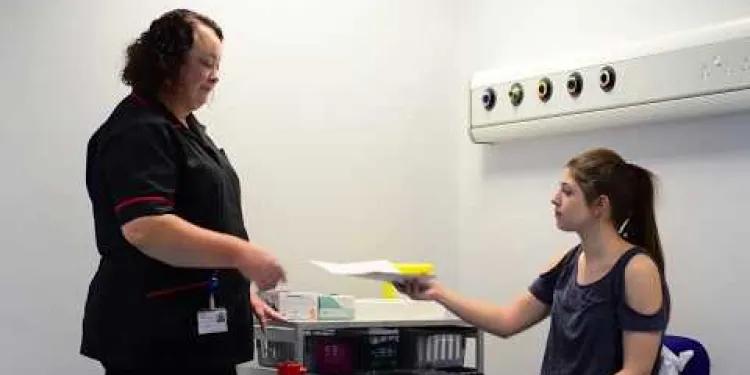
Having a blood test
Relevance: 23%
-

Shoulder subacromial shoulder pain
Relevance: 23%
-

Is a facelift painful?
Relevance: 23%
Understanding Womb Lining Tests: Pain and Expectations
What is a Womb Lining Test?
A womb lining test, also known as an endometrial biopsy, involves extracting a small sample of the endometrial tissue from the uterus lining for evaluation. This procedure helps to diagnose various conditions such as unexplained bleeding, infertility issues, and can even test for precancerous changes. Understanding the procedural aspects can alleviate concerns and prepare individuals for what to expect.Is the Procedure Painful?
Pain perception varies greatly among individuals. Some women experience mild discomfort, akin to menstrual cramps, during the procedure, while others may feel more intense pain. Factors that contribute to these varying experiences include the individual's pain threshold, psychological preparedness, and the specific technique used by the healthcare professional. Importantly, communication with the healthcare provider about pain management options can aid in minimizing discomfort.What to Expect During the Procedure
Prior to the biopsy, the healthcare provider might suggest taking over-the-counter pain relief medications, such as ibuprofen, to help manage post-procedural discomfort. The actual procedure usually lasts only a few minutes, during which the doctor will insert a speculum, similar to a smear test, to view the cervix. A thin instrument is then gently passed through the cervix to collect the tissue sample. The process can lead to sensations of cramping or pressure.Post-Procedural Experiences and Pain Management
After the procedure, some patients might experience light bleeding or spotting and cramps similar to those of a menstrual cycle. Managing discomfort can typically be handled with pain relief medications such as paracetamol or ibuprofen. Additionally, resting after the procedure, along with the application of a warm compress on the abdomen, can offer relief. However, it is crucial to contact a healthcare professional if there are signs of heavy bleeding, fever, or severe pain.Importance of Communication
Clear communication with healthcare providers before and during the womb lining test can significantly enhance the experience. Individuals are encouraged to discuss any concerns they may have regarding pain and express any previous instances of pain sensitivity during medical procedures. This enables medical professionals to take additional precautions or provide tailored advice to help ease an individual’s specific anxieties or sensitivities. Overall, while a womb lining test can cause some level of discomfort, understanding the procedure, preparing adequately, and maintaining open communication with healthcare providers can significantly help in managing any pain experienced.Understanding Womb Lining Tests: Pain and What to Expect
What is a Womb Lining Test?
A womb lining test, also called an endometrial biopsy, is when a doctor takes a tiny piece of tissue from inside the womb to check it. This test helps doctors find out why there might be unusual bleeding, problems having a baby, or if there are early signs of cancer. Knowing what will happen can help you feel less worried and be ready for the test.Is the Procedure Painful?
People feel pain differently. Some might feel only a little pain, like period cramps, while others might feel more. How much it hurts depends on how your body handles pain, how you feel mentally, and the way the doctor does the test. Talking with your doctor about ways to help with the pain can make things easier.What to Expect During the Procedure
Before the test, your doctor may tell you to take some pain medicine like ibuprofen to help with any pain after. The test itself only takes a few minutes. The doctor will use a tool called a speculum, like in a smear test, to see inside. Then, they will use a thin tool to gently take a small piece of tissue. You might feel some cramps or pressure while this happens.After the Procedure: What You Might Feel
After the test, some people notice a little bleeding or cramping, like with a period. You can take medicine like paracetamol or ibuprofen to help with pain. Resting and putting something warm on your tummy, like a warm cloth, can also help. If you have heavy bleeding, a fever, or strong pain, talk to your doctor.The Importance of Talking
Talking to your doctor before and during the test can make the experience better. Tell them if you’re worried about pain or have felt a lot of pain before in other tests. This helps the doctor to take extra care and give advice that helps you feel better. Overall, a womb lining test might not be comfortable, but knowing what happens, getting ready, and sharing your concerns with doctors can help manage any pain you feel.Frequently Asked Questions
What is a womb lining test?
A womb lining test, also known as an endometrial biopsy, is a medical procedure used to examine the lining of the uterus. It helps in diagnosing various conditions related to the uterus.
Is a womb lining test painful?
Experiences vary, but some women report mild to moderate discomfort during a womb lining test. Pain levels can depend on individual sensitivity and the specific procedure used.
How long does the pain last after a womb lining test?
Any discomfort usually resolves within a few hours, though some women may experience mild cramping or spotting for a day or two following the procedure.
Can I take painkillers before a womb lining test?
Yes, you can take over-the-counter pain relief like ibuprofen or paracetamol before the procedure, but it's best to consult your doctor for their specific recommendations.
How is a womb lining test performed?
The procedure involves inserting a thin tube through the cervix into the uterus to collect a small sample of the uterine lining. This is usually done in a doctor's office.
Will I need sedation for a womb lining test?
Sedation is not typically required for a womb lining test, but your doctor will advise based on your specific situation and anxiety levels.
Can I resume normal activities after a womb lining test?
Most women can resume their normal activities shortly after the procedure, but it’s advisable to rest if you experience discomfort.
Are there any risks associated with a womb lining test?
While generally safe, risks may include infection, bleeding, or cramping. Discuss any concerns with your doctor before the test.
How should I prepare for a womb lining test?
Your doctor will provide specific instructions, but generally, you may be advised to avoid using tampons or douches before the procedure.
What should I expect after the womb lining test?
You may experience mild cramping or spotting. If you have severe pain, heavy bleeding, or symptoms of infection, contact your doctor.
Why might a womb lining test be needed?
It's often recommended to investigate abnormal uterine bleeding, assess hormone levels, or check for uterine infections or conditions.
How long does a womb lining test take?
The procedure itself is relatively quick, typically taking about 10 to 15 minutes, though you'll need extra time for preparation and discussion with your doctor.
Can a womb lining test affect fertility?
A womb lining test doesn't typically affect fertility, as it involves taking only a small tissue sample.
How accurate is a womb lining test?
It's generally quite effective in diagnosing issues with the uterine lining, but results should be interpreted by a qualified healthcare provider.
Can I drive home after a womb lining test?
Yes, most women can safely drive themselves home after the procedure, unless otherwise advised by your doctor.
What is a womb lining test?
A womb lining test looks at the inside of a woman's tummy where a baby can grow. This is called the womb lining.
Doctors use special tools to check if it is healthy. They might take a small piece to look at more closely.
It can help find out why a woman might have trouble having a baby.
If you find reading hard, you can ask someone to help explain or use a video to learn more.
A womb lining test is also called an endometrial biopsy. This is a test that doctors do to check the inside of the womb, which is called the uterus. It helps doctors find out if there are any problems with the womb.
Does a womb lining test hurt?
Everyone feels different. Some women say they feel a little pain or some discomfort during a womb lining test. How much it hurts can depend on each person and the kind of test they have.
How long will the pain last after a womb lining test?
After you have a womb lining test, you might feel some pain. This pain usually does not last long.
Most people feel better in a few hours. Some people might feel pain for a day.
If the pain is very bad or lasts longer, talk to your doctor.
Helpful tips:
- You can use a warm pad on your belly to feel better.
- You can take medicine that helps with pain, like paracetamol.
- Rest and drink plenty of water.
If you feel any pain, it should go away in a few hours. Sometimes, girls might feel a little bit of belly ache or see a tiny bit of blood for a day or two after.
Can I take medicine for pain before a womb lining test?
Yes, you can take medicine for pain, like ibuprofen or paracetamol, before the procedure. But it's a good idea to ask your doctor what they think is best.
How do doctors check the inside of the womb?
Doctors want to look inside the womb. This is called a womb lining test. It helps them see if everything is okay.
Here are the steps:
- The doctor will talk to you and explain what will happen.
- You will lie down, like for a check-up.
- The doctor will use a small tool to gently take a tiny piece from inside the womb.
- It might feel a bit uncomfortable, but it is quick. You can take deep breaths to help relax.
- After the test, you can go home. The doctor will tell you the results later.
It is okay to ask someone to go with you for support.
The doctor will put a small tube inside your body. It goes through the cervix and into the uterus. They use it to take a tiny piece from inside the uterus. This is done at the doctor’s office.
Do I need medicine to make me sleepy for a womb lining test?
Sometimes, doctors use special medicine to help you be calm and relaxed during the test. This medicine is called sedation.
If you are worried, you can talk to your doctor about it before the test. They will explain everything to help make you feel better.
If reading is hard, you can use:
- Audiobooks or apps that read text out loud.
- Pictures or videos to learn more about the test.
You usually do not need sleep medicine for a womb lining test. But your doctor will tell you what is best for you, especially if you feel very worried.
Can I go back to my usual activities after having a womb lining test?
After you have a womb lining test, you might ask if you can do your normal things again. Talk to your doctor or nurse. They will tell you what is safe for you.
Here are some things that might help you:
- Rest: Take it easy for a little while after the test.
- Ask Questions: If you are not sure, ask your doctor or nurse what you can do.
- Follow Advice: Listen to what the healthcare people say. They know what's best for you.
Remember, everyone is different. Some people might feel fine right away. Others might need more time to rest.
Most women can go back to their normal activities soon after the procedure. But if you feel any pain, it's a good idea to rest.
Is there anything dangerous about a womb lining test?
When doctors check your womb lining, there might be some risks. Here are some things to think about:
- You might feel a little bit of pain or cramping.
- You could have some bleeding afterwards.
- There is a small chance of infection.
- Very rarely, something more serious could happen.
If you are worried, talk to your doctor. They can help explain it to you. You can also ask a friend or family member to come with you for support.
This test is usually safe, but sometimes you can get an infection, bleeding, or cramps. Talk to your doctor if you are worried.
How can I get ready for a womb lining test?
A womb lining test checks the inside of your womb.
You can follow these simple steps to get ready:
- Talk to your doctor. They can tell you what will happen during the test.
- Ask questions if you’re unsure about anything. It’s okay to ask as many questions as you need.
- Make a list of things you don’t understand and show them to your doctor.
- Sometimes, the doctor might ask you not to eat or drink before the test. Check with your doctor if this is needed.
- Wear loose and comfy clothes on the day of the test.
You can also ask a friend or family member to come with you. They can help you feel safe and remember what the doctor says.
Don’t worry – it’s okay to feel nervous. Doctors and nurses are there to help you.
Your doctor will give you special instructions. Usually, you should not use tampons or douches before the procedure.
What happens after a womb lining test?
After the test, the doctor will tell you what they found. You might feel a bit sore, but it should go away soon.
If you feel bad or have questions, talk to your doctor. They are there to help you.
You can ask a friend or family member to go with you. They can support you and help you remember what the doctor says.
You might feel a little cramp or see a few spots of blood. If you feel a lot of pain, see a lot of blood, or think you might have an infection, tell your doctor.
Why would you need a womb lining test?
Your doctor might want to check the inside of your womb. This is called a womb lining test.
Here are some reasons why:
- You have problems with your periods, like bleeding too much or too little.
- You are having trouble getting pregnant.
- The doctor wants to make sure everything is okay inside your womb.
If you don't understand, ask your doctor to explain. You can also bring a friend or family member to help you.
It's a good idea to find out why bleeding from the uterus is not normal. Doctors might check hormone levels or see if there is an infection or problem with the uterus.
How long does a womb lining test take?
The womb lining test does not take a long time. It usually takes about 10 to 20 minutes.
If you feel worried about the test, you can:
- Bring a friend or family member with you.
- Ask the doctor any questions you have.
- Take deep breaths to help you relax.
The procedure is pretty quick. It usually takes about 10 to 15 minutes. You will also need some extra time to get ready and talk with your doctor.
Can a Test on the Lining of the Womb Affect Having Babies?
A test on the womb lining checks the inside part of a woman's womb. Some people wonder if this test can make it harder to have a baby later. Here’s what you can do to understand it better:
- Ask a doctor to explain the test and what it means for having babies.
- Use pictures to see how the womb and lining look inside the body.
- Talk to someone who had the test to learn about their experience.
Remember, it's always okay to ask questions if you don't understand.
A womb lining test usually does not change how easy it is to have a baby. The test only uses a tiny piece of tissue.
Is a womb lining test right?
This test works well to check problems in the lining of the womb. But a doctor should look at the results to understand them.
Can I drive home after a womb lining test?
Will I be okay to drive home after the doctor checks my womb lining?
- Simple Answer: Yes, you can drive home.
- More Information: Your doctor will give you special instructions if you need them.
Here are some tips to help:
- Ask a friend or family member to go with you if you feel worried.
- Use a calendar to mark the date of the test so you remember.
- Bring a book or music to help you relax while you wait.
- If you use a smartphone, set reminders for the appointment.
If anything changes, your doctor will tell you what to do next.
Yes, most women can drive home safely after the procedure. But listen to your doctor if they say not to drive.
Useful Links
- Ergsy carfully checks the information in the videos we provide here.
- Videos shown by Youtube after a video has completed, have NOT been reviewed by ERGSY.
- To view, click the arrow in centre of video.
- Most of the videos you find here will have subtitles and/or closed captions available.
- You may need to turn these on, and choose your preferred language.
- Go to the video you'd like to watch.
- If closed captions (CC) are available, settings will be visible on the bottom right of the video player.
- To turn on Captions, click settings .
- To turn off Captions, click settings again.
More Items From Ergsy search
-

Is a womb lining test painful?
Relevance: 100%
-

Is the womb lining test painful?
Relevance: 98%
-

What is the Womb Lining test?
Relevance: 85%
-

What is the womb lining test?
Relevance: 84%
-

Is the womb lining test covered by the NHS?
Relevance: 82%
-

How is a womb lining test conducted?
Relevance: 82%
-

Is the womb lining test covered by the NHS?
Relevance: 81%
-

Why is a womb lining test performed?
Relevance: 80%
-

Are there risks associated with a womb lining test?
Relevance: 80%
-

Can a womb lining test detect cancer?
Relevance: 80%
-

How is the womb lining test performed?
Relevance: 79%
-

Are there any risks associated with the womb lining test?
Relevance: 78%
-

Can a womb lining test detect cancer?
Relevance: 77%
-

Can I drive after the womb lining test?
Relevance: 76%
-

What happens after a womb lining test?
Relevance: 76%
-

Why might someone need a womb lining test?
Relevance: 76%
-

How should I prepare for a womb lining test?
Relevance: 74%
-

Is there any follow-up required after a womb lining test?
Relevance: 73%
-

Does the womb lining test require any special preparation?
Relevance: 71%
-

How long does it take to get results from a womb lining test?
Relevance: 66%
-

How long does it take to get results from a womb lining test?
Relevance: 66%
-

What does an evaporation line mean on a pregnancy test?
Relevance: 42%
-

What should I do if I experience severe pain or bleeding after the test?
Relevance: 31%
-

How to deal with period pain | NHS
Relevance: 31%
-

What is a lot line adjustment?
Relevance: 28%
-

Are digital pregnancy tests more accurate than non-digital tests?
Relevance: 28%
-

How does a pregnancy test work?
Relevance: 27%
-

What is a pregnancy test?
Relevance: 26%
-

Period pain (dysmenorrhoea) - BSL
Relevance: 26%
-

What should I do if I get unclear results on a pregnancy test?
Relevance: 25%
-

How do NSAIDs work to reduce pain?
Relevance: 24%
-

How to deal with period pain | NHS
Relevance: 24%
-

When should I take a pregnancy test?
Relevance: 24%
-

Rectal swab test for Gonorrhoea and Chlamydia
Relevance: 24%
-

Foot Pain
Relevance: 23%
-

Is impetigo painful?
Relevance: 23%
-

How to deal with period pain | NHS
Relevance: 23%
-

Having a blood test
Relevance: 23%
-

Shoulder subacromial shoulder pain
Relevance: 23%
-

Is a facelift painful?
Relevance: 23%


